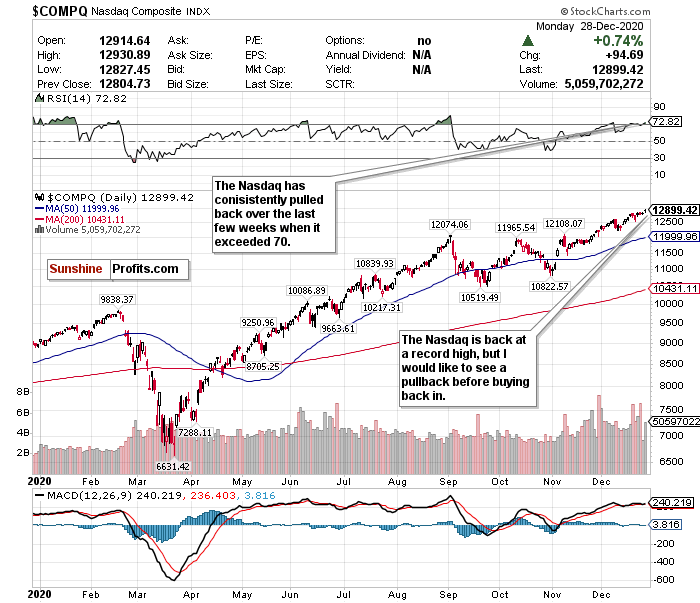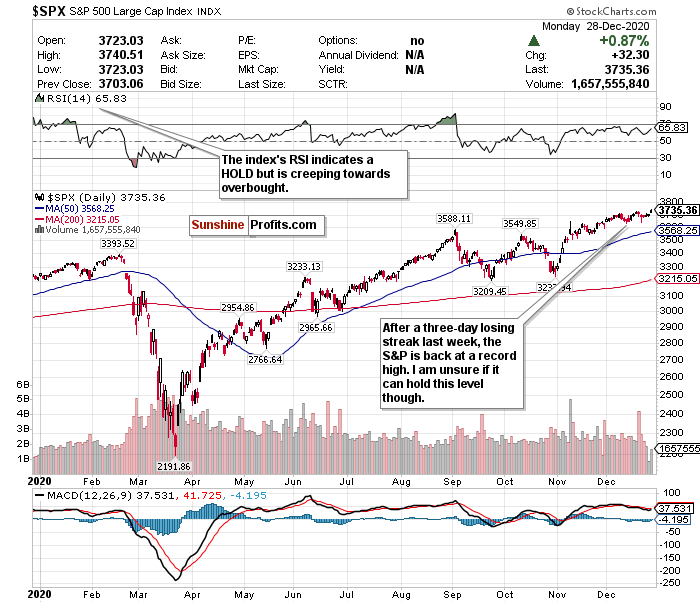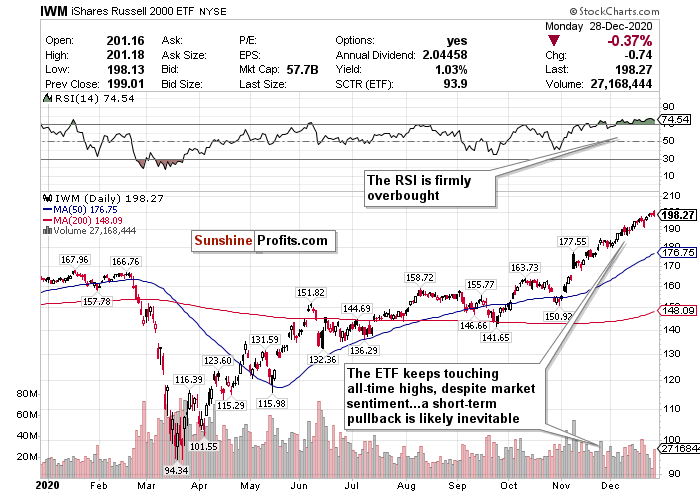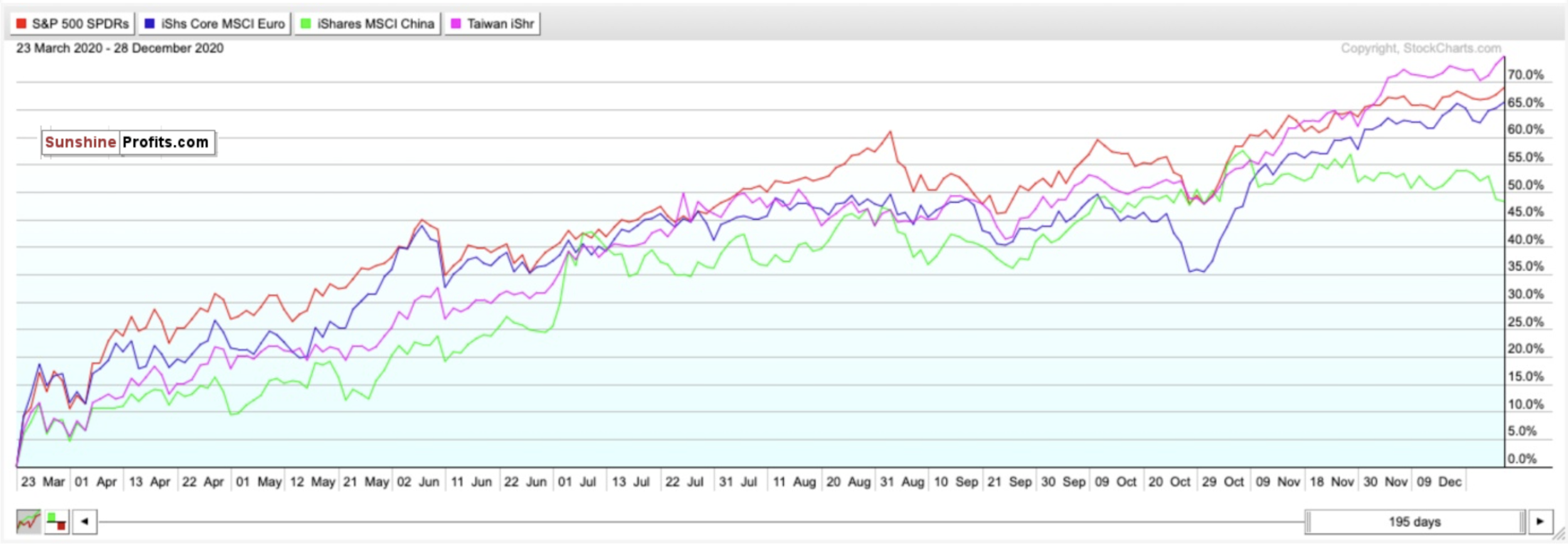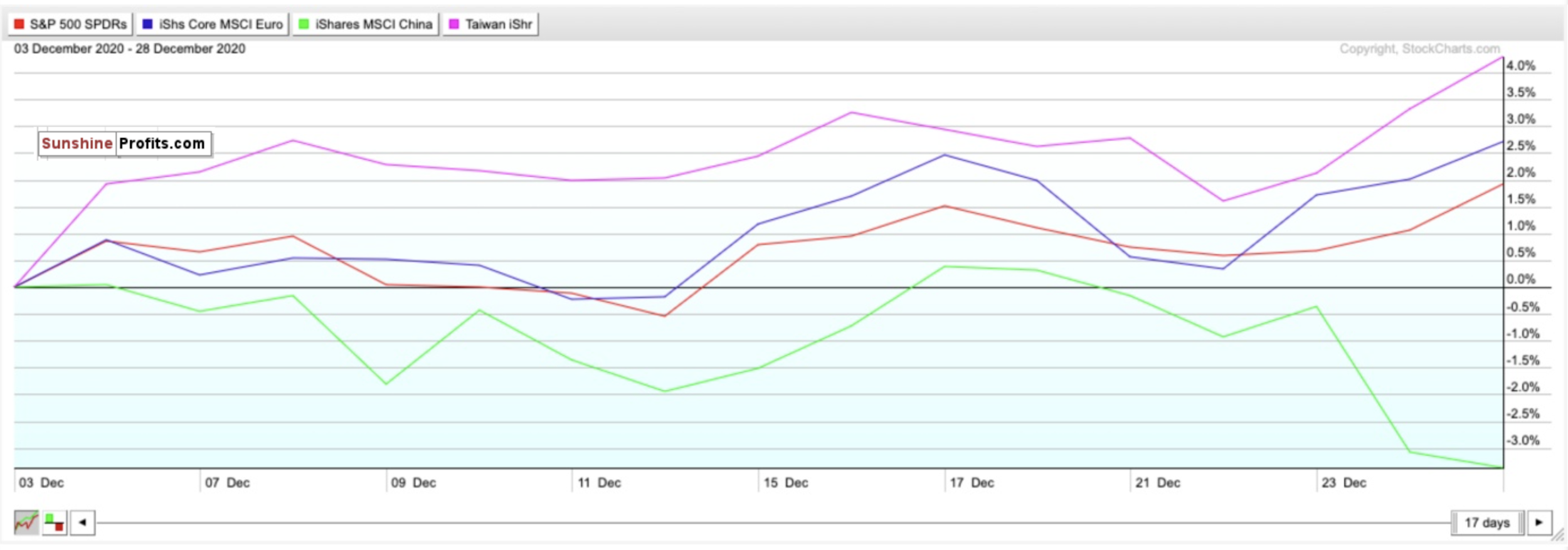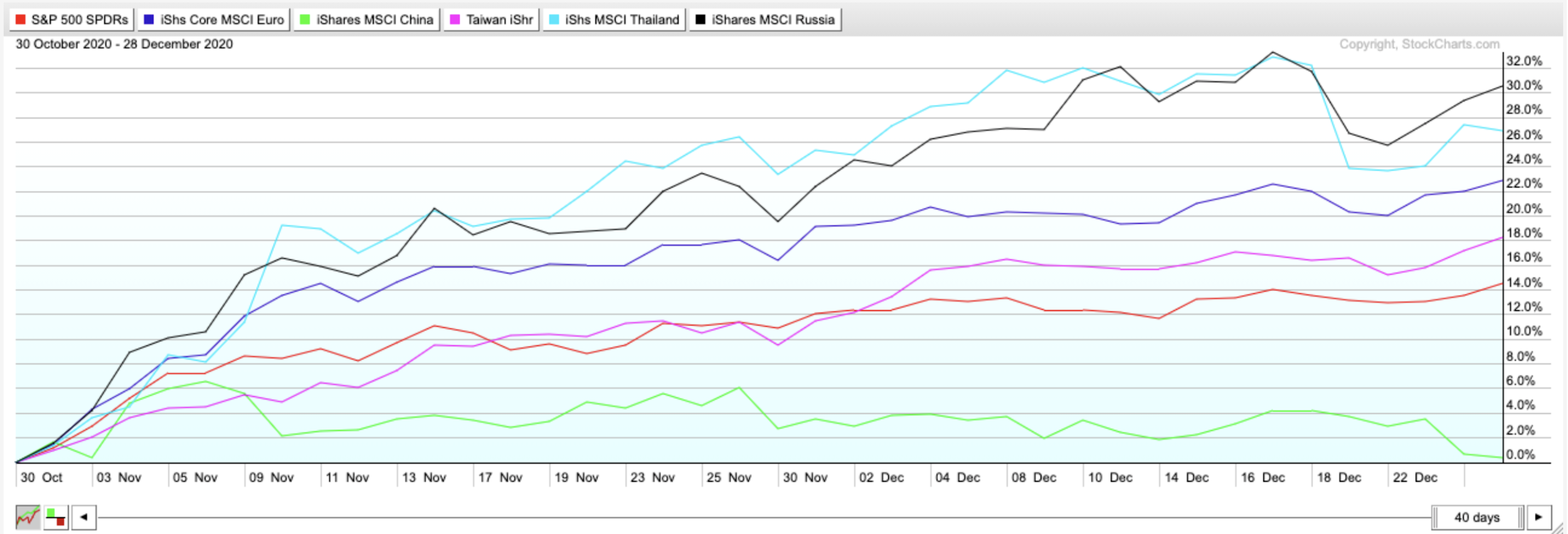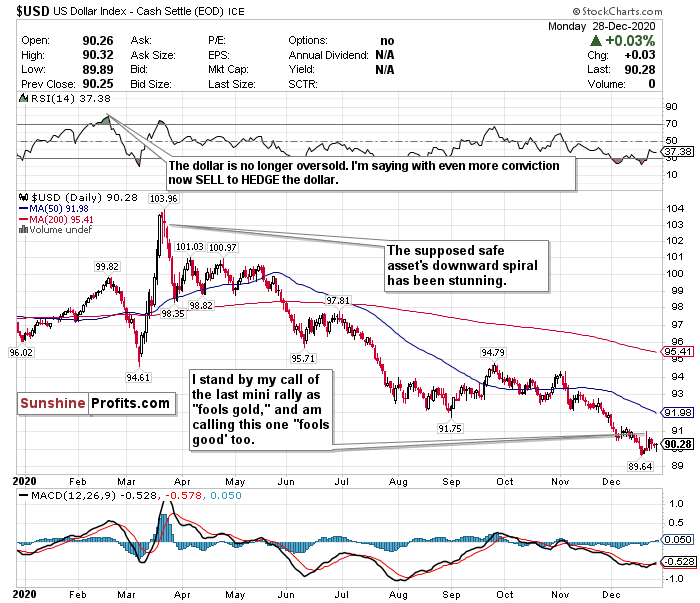Quick Update
As a quick update to kick off today’s newsletter, I would like to summarize my correct calls and what I profited on since beginning to publish these updates. While nobody can predict the future, the major calls I am most proud of since producing these letters are 1) adding emerging market exposure and 2) hedging or selling the U.S. Dollar.
Emerging markets have been some of the best performers in 2020, and I have made some bullish calls on specific regional markets for 2021 as well. I have been touting emerging markets since my first report, but when I switched my focus to specific regions, my calls became even more correct. On December 3rd, I called Taiwan (EWT ETF) the best bet for emerging market exposure while avoiding the risks and baked in profits of China. Since then, the EWT ETF which tracks Taiwan has gained over 4.3% while the MCHI ETF which tracks China has fallen over 3.3%. The Taiwan ETF has also outperformed the SPY S&P 500 ETF and the IEUR ETF which tracks Europe.
My calls on the U.S. dollar were also correct. Since I started doing these newsletters about a month and a half ago, I consistently reiterated that the dollar should be hedged or avoided because of the Fed’s policies, effect of interest rates this low for this long, government stimulus, strengthening of emerging markets, and inflation. I also said that any minor rally the dollar would experience would be fool’s good. In the last month and a half, the dollar has fallen around 2.3%, and since it briefly pierced the 91-level on December 9th, it has fallen another 1%.
Markets kicked off the final week of 2020 with a surge towards record highs after President Trump finally signed off on the stimulus bill.
News Recap
- All major indices closed at record highs. The Dow Jones rose 204.10 points higher, or 0.7%, to close at 30,403.97. The S&P 500 climbed 0.9% to 3,735.36, and the Nasdaq rose 0.7% to 12,899.42. Meanwhile, the small-cap Russell 2000 underperformed and declined 0.38%.
- After President Trump called the $900 billion stimulus package an unsuitable “disgrace,” and alluded to possibly vetoing the bill, over the weekend the president signed the bill into law. By signing off, a government shutdown was averted while unemployment benefits were extended to millions of Americans.
- After President Trump demanded stimulus checks for Americans to be raised from $600 to $2,000 each, the Democrat-led House voted for this measure on Monday (Dec. 28). The ball is now in the GOP-led Senate’s court on the measure. They are not expected to approve the measure.
- Apple led the Dow higher, and gained 3.6%. Disney also climbed nearly 3%.
- Communication services, consumer discretionary and tech were the best performing sectors in the S&P 500, with each rising over 1%.
- Amidst fears of a COVID-19 “surge on top of a surge” after the Christmas holiday, over one million people in the U.S. have now been vaccinated. Meanwhile, the U.S. has averaged at least 184,000 new infections per day.
Markets cheered President Trump’s signing of the stimulus package and are further encouraged by the possibility of larger stimulus checks. After the market traded flat last week, it kicked off the final week of 2020 with a bang. Although it is still very possible that consolidation, profit taking, and rebalancing could happen in this shortened week, the general focus of both investors and analysts has appeared to be the long-term potential of 2021.
As Tom Essaye, founder of The Sevens Report said:
“The five pillars of the rally (Federal stimulus, FOMC stimulus, vaccine rollout, divided government and no double dip recession) remain largely in place, and until that changes, the medium and longer-term outlook for stocks will be positive.”
While I still do believe that there will be a short-term tug of war between good news and bad news, I am now convinced that these moves are manic and based on sentiment. There has not been a pullback to end the year as I anticipated. But I still do believe that markets have overheated, and that between now and the end of Q1 2020 a correction could happen.
There is optimistic potential, but the road towards normalcy will hit inevitable speed bumps.
I do believe though that a correction is healthy and could be a good thing. Corrections happen way more often than people realize. Only twice in the last 38 years have we had years WITHOUT a correction (1995 and 2017). I believe we are overdue for one since there has not been one since the lows of March. This is healthy market behavior and could be a very good buying opportunity for what I believe will be a great second half of the year.
The mid-term and long-term optimism are very real, despite the near-term risks. The passage of the stimulus package only solidifies the robust vaccine-induced tailwinds entering 2021.
The general consensus is that 2021 could be a strong year for stocks, despite short-term headwinds. According to a new CNBC survey which polled more than 100 chief investment officers and portfolio managers, two-thirds of respondents said the Dow Jones will most likely finish 2021 at 35,000 - a roughly 16% gain from Thursday’s close of 30,199.87. Five percent also said that the index could climb to 40,000 by the end of 2021.
Therefore, to sum it up:
While there is long-term optimism, there are short-term concerns. A short-term correction between now and Q1 2021 is very possible. But I do not believe, with conviction, that a correction above ~20% leading to a bear market will happen.
Another Nasdaq Pullback? Not if but WHEN
Figure 1 - Nasdaq Composite Index ($COMPQ)
I changed my short-term call on the Nasdaq to a SELL on December 18. While I did not say to fully exit positions, I said that now would be a good time to trim some profits before an eventual pullback. While the Nasdaq was largely flat in the week after, it has since rallied back to a record high. However, I still believe that a pullback in the early part of 2021 is inevitable.
While an overbought RSI does not automatically mean a trend reversal, I called keeping a very close eye on this for the Nasdaq. The Nasdaq pulled back on December 9th after it exceeded an RSI of 70, and briefly pulled back again after passing 70 again last week. We are now back above 70 and back at all-time highs. I believe another decline is imminent.
Although the tailwinds are very real, this has all the signs of a bubble with no fundamentals to back up the gains. Do not let anyone tell you “this time is different” if fears of the dot-com bubble are discussed. History repeats itself, especially in markets. I have many concerns about tech valuations and their astoundingly inflated levels. The recent IPOs of DoorDash (DASH) and AirBnB (ABNB) reflect this.
Do what you can though to research tech companies that have innovator and disruptor potential. There is always an opportunity somewhere. While tech has overheated in the short-term, my optimism and bullish thoughts for 2021 have not changed. I hope tech pulls back closer to its 50-day moving average for some quality long-term buying opportunities.
For now, take profits and SELL. Do a little rebalancing before 2021 - but do not fully exit.
Do not forget that tech can be very helpful to own on pessimistic days because of all the “stay-at-home” names as well. This is why you should trim, take some gains, but not fully exit positions.
For an ETF that attempts to directly correlate with the performance of the NASDAQ, the Invesco QQQ ETF (QQQ) is a good option.
The S&P Has Long-term Upside Mixed with Uncertainty
Figure 2 - S&P 500 Large Cap Index ($SPX)
After the S&P 500 ended a three-day losing streak to close off last week, it is not firmly back above 3700 and at a record high. I always cheer stocks going up and hitting records, but I want buying opportunities too. I would prefer this blue-chip large-cap index to drop to around 3600 or below before making a BUY call.
Although the RSI is showing a HOLD, it is creeping towards overbought levels. I believe that a short-term correction will inevitably occur by the end of Q1 2021.
While many analysts and strategists believe this short-term uncertainty is worth it for long-term potential, (and I tend to agree), I would prefer a sharper correction to initiate S&P exposure at a discount. There is clear upside for the second half of 2021. I would just prefer to maximize the upside if I believe that it’s possible to buy the ETF at a lower level.
Some analysts believe the S&P could have up to a 20% upside in 2021, while others caution against an overheating index. According to another survey of market strategists conducted by CNBC, a narrow majority believe that U.S. stocks will continue to rally into 2021, with the S&P 500 rising between 8% and 22% next year from these current levels. This very well could be the case, but I believe most of this will happen in the next 6-12 months rather than 1-3 months.
For now, I have the S&P 500 in a HOLD category.
For an ETF that attempts to directly correlate with the performance of the S&P, the SPDR S&P ETF (SPY) is a good option.
Can Small-caps Own 2021?
Figure 3 - iShares Russell 2000 ETF (IWM)
Although the Russell 2000 small-cap index underperformed the larger-cap indices on Monday (Dec. 28), the index has outperformed since the start of November and been on a record run.
I do believe though that just like the law of gravity, “what goes up must come down.” I love small-cap stocks in the long-term, especially as the world reopens. But I believe that in the short-term, the party has to stop at some point. The index has simply overheated. The RSI for the IWM Russell 2000 ETF is at an astronomical 74.54, and I just believe that a pullback in the short-term is inevitable.
The iShares Russell 2000 ETF (IWM) compared to the ETFs tracking the Dow, S&P, and Nasdaq since November, the IWM has risen nearly 30% and has nearly doubled the returns of the ETFs tracking the other major indices. The trend has been largely the same since the start of December as well.
I do have some concerns about overheating in the short-term. Stocks simply just don’t always go up in a straight line. If they did, everyone and their mother would invest. I believe a short-term pullback for small-caps will eventually happen, and I truthfully hope it does for long-term buying opportunities.
SELL and take short-term profits if you can - but do not fully exit positions.
If there is a pullback, this is a STRONG BUY for the long-term recovery.
Mid-Term/Long-Term
Taiwan and Others for Emerging Market Exposure - Not China
Figure 4 - Emerging Markets (March 23 – December 28, 2020)
Emerging markets in both the medium-term and long-term have robust potential. But at this point, it is very country-specific.
Although China garners most of the attention as a so-called “emerging market,” it has not been the top performer since markets bottomed on March 23rd and is no longer the top option for 2021. If you want China’s regional upside with less geopolitical risks or pandemic recovery baked-in, look at the Taiwan iShares ETF (EWT). Taiwan has outperformed China in the short-term, medium-term, and long-term.
As seen in the chart below, ever since I first called the Taiwan ETF (IWT) a BUY on December 3rd, it has outperformed the MSCI China ETF (MCHI), the SPDR S&P ETF (SPY), and iShares Core Europe ETF (IEUR).
The EWT has gained over 4.3% while the MSCI China ETF (MCHI) has fallen over 3.3%. The Taiwan ETF has also outperformed the SPY S&P 500 ETF and the IEUR ETF which tracks Europe.
Figure 5 - Emerging Markets (December 3 - 28, 2020)
China may have handled the pandemic better than other countries and continues to demonstrate its ability to handle COVID-19’s economic shocks. But keep in mind that this is a regional victory, not just China.
There are two other emerging markets I am very bullish on for 2021 as well- Thailand and Russia. According to a Bloomberg study based on 11 indicators of economic and financial performance, Thailand topped the list due to solid reserves and a high potential for portfolio inflows, while Russia scored second due to robust external accounts, a strong fiscal profile, and an undervalued currency.
Do you know who scored poorly on this list? China. High expectations were largely already baked in during its 2020 recovery, and there is little upside.
Do you also know who significantly outperformed the Taiwan ETF (IWT), the MSCI China ETF (MCHI), the SPDR S&P ETF (SPY), and iShares Core Europe ETF (IEUR) since October 30th? The iShares MSCI Thailand ETF (THD) and the iShares MSCI Russia ETF (ERUS).
Figure 6 - Emerging Markets (October 30 - December 28, 2020)
For broad exposure to Emerging Markets, you will want to BUY the iShares MSCI Emerging Index Fund (EEM), for exposure to a regional economic power without the geopolitical risks of China, you will want to BUY the iShares MSCI Taiwan ETF (EWT). Consider the iShares MSCI Thailand ETF (THD) and the iShares MSCI Russia ETF (ERUS) as well for 2021 upside.
The Dollar’s Rally is a Mirage
Figure 7 – ICE U.S. Dollar Index Futures Contract
In the last five days, the U.S. Dollar has rallied nearly 0.36%, but I am not a fan of the dollar and am not fooled by this latest mini-rally. I called its rally past the 91-level three weeks ago “fool’s gold,” and I’m calling this rally “fool’s gold” as well.
I am still calling out the dollar’s weakness after several weeks despite its low levels. I expect the decline to continue as well thanks to a dovish Fed.
Since hitting a nearly 3-year high on March 20th, the dollar has plunged nearly 13% while emerging markets and other currencies continue to strengthen.
On days when COVID-19 fears outweigh any other positive sentiments, dollar exposure might be good to have since it is a safe haven. But in my view, you can do a whole lot better than the U.S. dollar for safety. Despite the world’s reserve currency trading back above 90, it is still hovering around its lowest levels since April 2018. I believe it’s very possible that it drops below 90 again before the new year.
I have too many doubts on the effect of interest rates this low for this long, government stimulus, strengthening of emerging markets, and inflation to be remotely bullish on the dollar’s prospects over the next 1-3 years. Meanwhile, the US has $27 trillion of debt, and it’s not going down anytime soon.
Additionally, according to The Sevens Report, if the dollar falls below 89.13, this could potentially raise the prospect of a further 10.5% decline to the next support level of 79.78 reached in April 2014. I believe this is more likely to happen than the dollar piercing 91 again.
The dollar’s RSI is now back above 37 somehow as well despite significantly trading below both its 50-day and 200-day moving averages.
For now, where possible, HEDGE OR SELL USD exposure.
Pay Very Close Attention to Inflation
Pay very close attention to the possible return of inflation within the next 6-12 months. The Fed has said it will allow the GDP to heat up, and it may overshoot in the medium-term as a result. Although JP Morgan and Goldman Sachs have cut their GDP growth estimates for Q1 2021, pay close attention to what happens in Q2 and Q3 once vaccines begin to be rolled out on a massive scale. It is only inevitable that inflation will return with the Fed’s policy and projected economic recovery by mid-2021.
If you are looking to the future to hedge against inflation, look into TIPS, commodities, gold, and potentially some REITs.
In the mid-term, I have BUY calls on the SPDR TIPS ETF (SPIP), the Invesco Optimum Yield Diversified Commodity Strategy No K-1 ETF (PDBC), the SPDR Gold Shares ETF (GLD), and the iShares Cohen & Steers REIT ETF (ICF).
Long-Term
There is so much to worry about in the short-term. But I believe that the economic stimulus and the progress made with the vaccine(s) bodes well for the second half of 2021. We may be at the beginning of the end of the pandemic. But over the next 1-3 months, this could be a very bumpy ride back. Projections for the economy, the markets, and the pandemic are so all over the place right now.
There does seem to be one consensus though: 2021 could be a big year for stocks.
I have a very good feeling about stocks, especially small-caps, value stocks, and cyclicals. I just have a much better feeling for them in the second half of 2021. I almost hope we see a correction within the first three months of 2021. This could be a very strong buying opportunity.
Summary
While the headwinds of an out-of-control pandemic and an overheating market may drive some short-term concerns, the stimulus deal and the vaccine(s) pose significant optimism for 2021 and beyond.
However, until COVID-19 is eradicated, there will inevitably be a tug of war between optimism and pessimism. The mania that has consumed the markets could lead to a short-term correction to start 2021 as well.
Please keep in mind though that markets are forward-looking instruments and are investment vehicles that look 6-12 months down the road. Although it is very plausible that there could be some short-term uncertainty and volatility, use this as a time to find buying opportunities for the second half of 2021. Do not get caught up in fear if there is a correction.
I do not believe a crash like the one we saw in March is on the horizon, but a pullback of some sort is inevitable. If this happens, do not be fearful. Since markets bottomed on March 23rd, here is how the ETFs tracking the indices have performed: Russell 2000 (IWM) up 101.3%. Nasdaq (QQQ) up 84.35%. S&P 500 (SPY) up 69.05%. Dow Jones (DIA) up 65.48%.
In the long-term, markets always end up moving higher and are focused on the future rather than the present.
To sum up all our calls, in the short-term I have a SELL call for:
- Invesco QQQ ETF (QQQ) (but do not fully exit positions - trim profits)
- iShares Russell 2000 ETF (IWM) (but do not fully exit positions - trim profits)
I have a HOLD call for:
- the SPDR S&P ETF (SPY),
- SPDR Dow Jones ETF (DIA)
I also have a long-term STRONG BUY call for:
- iShares Russell 2000 ETF (IWM) BUT IF AND WHEN IT PULLS BACK
For all these ETFs, I am more bullish in the long-term for the second half of 2021.
For the mid-term and long-term, I recommend selling or hedging the US Dollar, and gaining exposure into emerging markets.
I have BUY calls on:
- The iShares MSCI Emerging Index Fund (EEM),
- the iShares MSCI Taiwan ETF (EWT),
- the iShares MSCI Thailand ETF (THD), and
- the iShares MSCI Russia ETF (ERUS).
Additionally, because I foresee inflation returning as early as mid to late 2021…
I also have BUY calls on:
- The SPDR TIPS ETF (SPIP),
- the Invesco Optimum Yield Diversified Commodity Strategy No K-1 ETF (PDBC)
- the SPDR Gold Shares ETF (GLD), and
- the iShares Cohen & Steers REIT ETF (ICF)
Thank you.
Matthew Levy, CFA
Stock Trading Strategist


